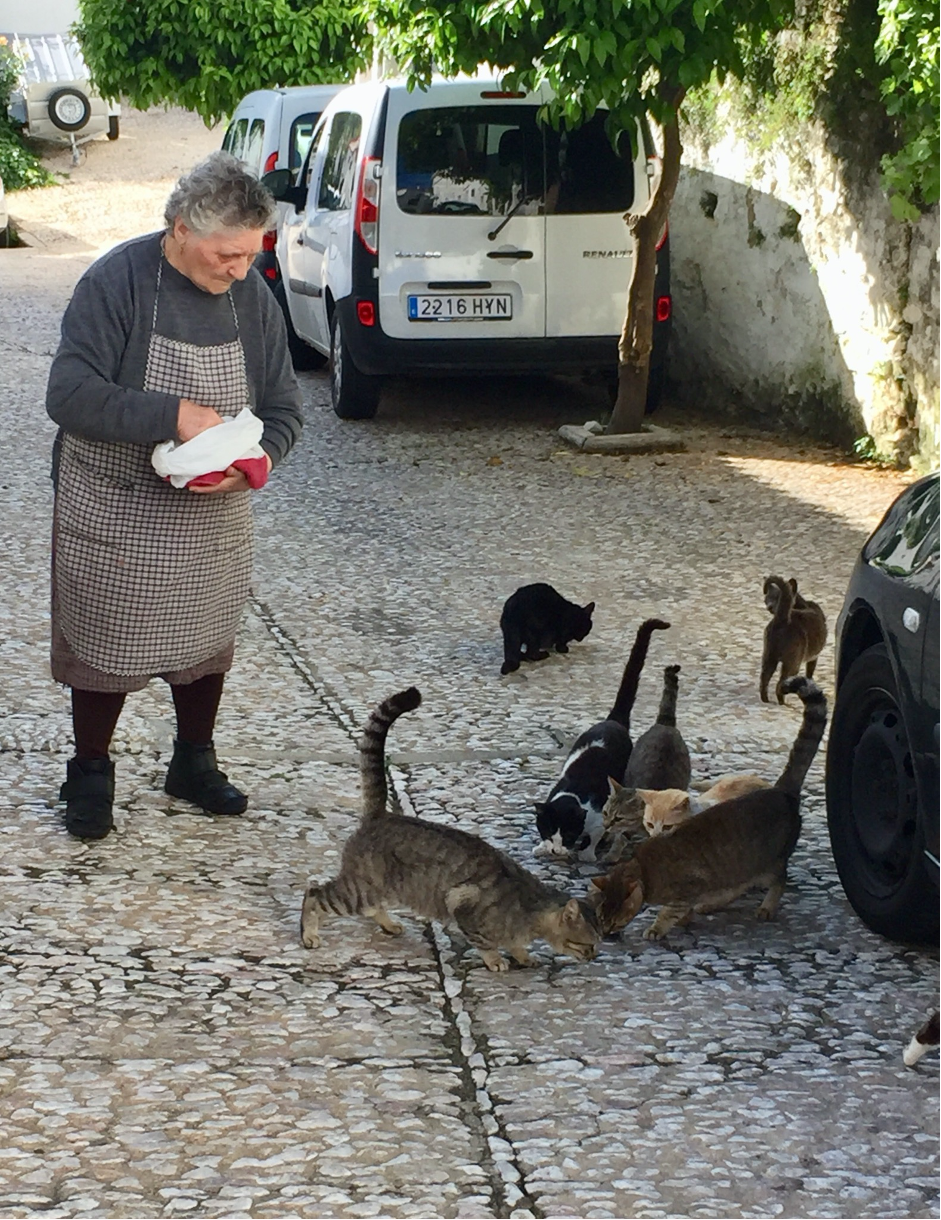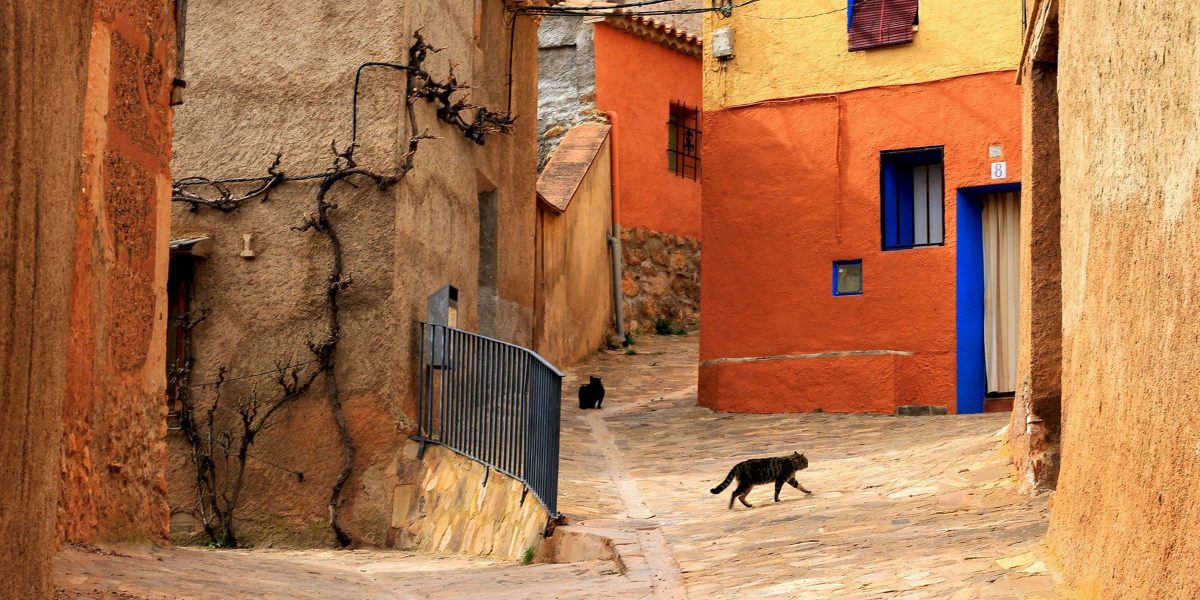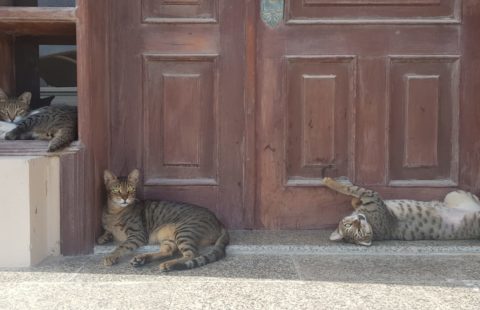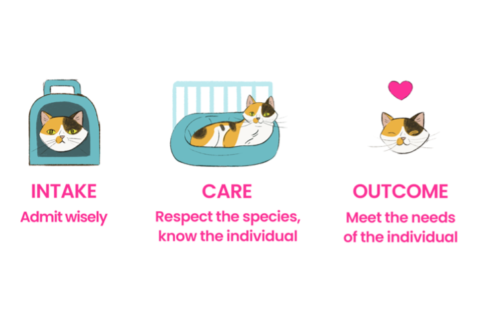Great work is often done within communities by people who see a problem and take a personal responsibility for its solution.
Pauline Dean, now living back in the UK, visited a small town in Spain and decided she needed to take action to help the many street cats that she saw there. Her story illustrates how a small group of people can work with a community to make things happen. This is what Pauline has to say about her experience.
Whilst staying in a small, Andalucian town, I became aware of the many street cats. I saw several colonies, often with feeders, who generally kept quiet about their activities. There was no Trap, Neuter and Return work going on, nor could we find any group who could help in the area. If anyone complained to the council, the van came round and trapped a number of cats which were never seen again.
I regularly saw the same cats in the same streets, many female, frequently pregnant, but I rarely saw any kittens. One colony with about 6 females produced only 3 surviving kittens by the autumn of that year. People did not view it as a problem, the kittens die, the cats do not live long and often got run over, even though the roads were not busy and driving in town was slow, having to negotiate parked cars and other obstacles in narrow streets.
My partner, Phil and I talked to some friends and decided to do something. With the help of Rocio, a local cat lover who also speaks excellent English, we set up Animales Protegidos en Almonaster la Real (APA), a small band of people from the town who wanted to do something positive for the street cats. Rocio steered the group through all the paperwork to enable APA to become an official non profit-making organisation, with a registered number. Our first fund raiser was a stall at the town’s Christmas market. It was not a big affair, there were only two other stalls on the town square, but we made our first €200. After the very kind donation of an MDCExports trap and three trap transfer and restraining baskets by SNIP International, we were ready to start.
Vets in this part of Spain are very good at dealing with pigs, as there are thousands of them around. However, there are only a few people who take dogs and cats to the vet, although things are changing. We were lucky to find Francisco, a vet in Aracena, about 15 miles away, who had a surgery and was used to treating cats. Not only did he give us a very fair price for neutering, but also spoke English (I am not good at languages), as he had worked in the very town I was born in!
We decided to start with a colony where there had been complaints about the cats. The feeder’s family were concerned that she spent all her money on the best quality food for the cats, leaving little for herself. All the cats would wait outside her house for her to feed them. I shall never forget seeing her walking down the street, followed by a retinue of hungry felines. Little did I realise that it would soon be me who would be walking down the same street, followed by the same cats.

To get to know and gain the trust of the colony, I started going to town early each morning with my bag of biscuits. It was fascinating watching the colony change from being a pile of tabby cats with a few black and whites and a tortie or two, to seeing them all as individuals. There was One Eye, an older matriarch who was respected by all the others. She had a kitten that she was looking after, the only one of hers to survive that year. She was one of the first to be spayed and ear tipped. No more pregnancies and trying to raise kittens for her!
Getting cats into the trap was not a problem. They queued up to get the food before it was set, so happily walked in on trapping days. One cat I called Tortie and White did not need to be trapped. I just picked her up and placed her in the basket. Later that day, she was released back, having been spayed. It was always a problem to care for the cats after their surgery. Ideally, we would keep them in overnight and release them back to the colony the next morning, but we had nowhere for them to go, so I would take them to the end of the street where they lived. It was quiet, peaceful and cool by the little river and there was shade to put the baskets in. Trying to explain what I was doing to any passerby, in my limited Spanish, was not easy, but I could manage “Trap, Neuter and Return,” in Spanish!
Tortie and White was so pretty and friendly, which meant that she got more than her fair share of the food, having no fear of people. Then, one day, she was gone, just as suddenly as she had appeared. I found out that a passing car had seen her, stopped, the passenger got out and scooped her up and took her away. Apparently she lived with this woman some 40 miles away and had been scared by the fireworks at a fiesta. She had got out, run off, hid in a car which next stopped in Almonaster where she joined a colony of cats.
Rocio put in an application to the council for funds to help with the cats. Unfortunately, we were not successful, so we applied to have a stall in the square every Saturday, selling crafts and second-hand goods. This was something quite new to the area, but we got lots of donations and later opened up a charity shop each Saturday, which was also a first for the area. Running a second-hand shop when you speak very limited Spanish, was quite a challenge. I learnt my numbers to tell people the prices, even though I had made price tags for everything and finally got my tongue around cincuenta centimos, (50 cents,) which I seemed to struggle with!
I was keen that every hard-earned euro was spent directly helping the cats and this we did. We neutered 47 cats over 15 months, which included 18 from the colony I started with every cat in the colony, except one that got away. I regret that I foolishly let him escape when I was transferring him from the trap to the basket. He did not show up for many weeks and only started to come for food a few days before we were leaving to return to the UK and I had so much to do that I just could not afford a whole day to take him to be neutered. The ones I was most pleased to have got done were the five youngsters, who were about five months old. The three females will not have to go through pregnancies and watching their kittens die. We did let them spend the night at our tiny, one roomed house in the forest, in a small pen. I could not put such young cats back on the street the same day.
In October 2019, we left Spain, along with our four cats that we had acquired and are now living in Shetland. I am really pleased that the group is still going and that they finally got some financial support from the council and have neutered more street cats. You can find out more from the Facebook pages Animales Protegidos en Almonaster la Real – English, or if you speak Spanish, Animales Protegidos en Almonaster la Real – Español.
If you’re inspired by Pauline’s work and would like to set up your own TNR programme, we have an article that lays out all the things you need to consider beforehand. You can read this here






